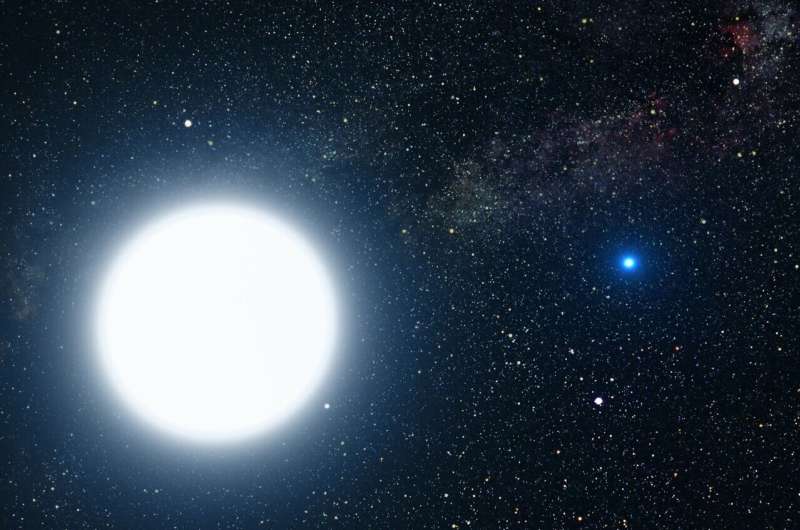This article has been reviewed according to Science X's editorial process and policies. Editors have highlighted the following attributes while ensuring the content's credibility:
fact-checked
peer-reviewed publication
trusted source
proofread
Investigating the evolution of a double oxygen-neon white dwarf merger remnant

A research group led by assistant professor Wu Chengyuan from Yunnan Observatories of the Chinese Academy of Sciences has investigated the evolution of post-merger remnant resulting from the coalescence of double oxygen-neon white dwarfs. They have found that the final fate of such remnant is impacted by the process of convective boundary mixing. However, the wind mass-loss process and rotation may not affect the evolution and final fate of the remnant too much.
The study was published in Monthly Notices of the Royal Astronomical Society.
Double white dwarfs in binary systems can merger together due to the gravitational wave radiation. Double white dwarf binaries are important gravitational wave sources in our galaxy, and the massive ones are related to the type Ia supernovae, electron capture supernovae and millisecond pulsars.
At present, the evolutionary outcomes of double oxygen-neon white dwarfs mergers are still unclear. The research team constructed the corresponding models to investigate their evolution. They found that such a merger remnant could trigger an inwardly propagating O/Ne flame immediately after merger. The remnant would gradually evolve towards giant phase, and the evolutionary outcomes are linked to the convective boundary mixing process.
If the mixing process cannot impact the flame, the flame will reach the center within 20 years, and the remnant will explode as an iron-core-collapse supernova. If the mixing process can prohibit the flame from reaching the center, the final outcome of the remnant would be an ONeFe white dwarf through electron-capture supernova.
Furthermore, researchers found that the wind mass-loss process and rotation may not affect the evolution and final fate of the remnant too much because of the short lifetime of the remnant.
More information: Chengyuan Wu et al, Evolution of double oxygen–neon white dwarf merger remnant, Monthly Notices of the Royal Astronomical Society (2023). DOI: 10.1093/mnras/stad2636
Journal information: Monthly Notices of the Royal Astronomical Society
Provided by Chinese Academy of Sciences



















